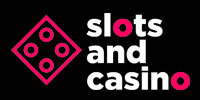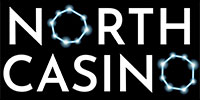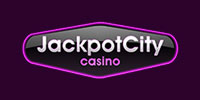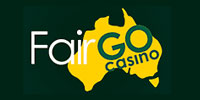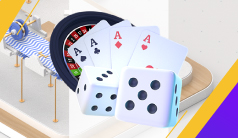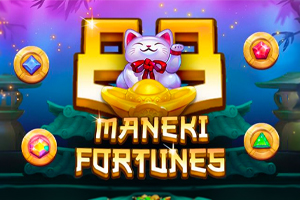Craps Books
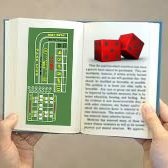
Craps is one of the most entertaining casino games players can find. The popularity of the game is worldwide, and this allows experts to write about their experience with playing and winning at the craps table. This is why many new players to the casino scene want and need guidance in the form of craps books.
Those looking for the best books on craps have come to the right place. In our guide, you will find a wide variety of books and authors. These can range from personal experiences that players can learn from to professional gamblers breaking down the game. Take a look at each of the best books on craps and start expanding your knowledge on this popular casino dice game.
Craps Books To Read
Best Craps Strategy Books for Beginners
Best Casinos to Play Craps for Real Money
- 1DuckyLuck Casino
- Over 400 Slots
- Desktop and Mobile-Friendly
- Huge Welcome Bonuses
Deposit Options include:- bitcoin
- mastercard
- visa
- amex
- discover
Compatible with:- windows
- apple
- android
- mobile
500% up to $7,500 - 2Bovada Casino
- Great Crypto Welcome
- MatchPay & Vouchers Banking
- High-Paying Jackpots
Deposit Options include:- visa
- mastercard
- bitcoin
Compatible with:- windows
- apple
- android
- mobile
125% up to $3,750 - 2SlotsandCasino
- Over 500 Slot Games
- Exclusive OUSC Bonus
- Great Specialty Games
Deposit Options include:- visa
- mastercard
- amex
- discover
- bitcoin
Compatible with:- windows
- apple
- android
- mobile
500% up to $7,500 - 3North Casino
- Thousands of Slot Games
- Mobile, Instant & Live Dealer Games
- Excellent Signup & Reload Bonuses
Deposit Options include:- visa
- mastercard
- neteller
- bitcoin
- skrill
- wire
- visa-gift
Compatible with:- windows
- apple
- android
- mobile
Up to $5,000 - 3Hellspin
- Canada Players Accepted, Quick Payouts
- Huge Bonus With Free Spins
- Large Selection of Real Money Games
Deposit Options include:- visa
- mastercard
- bitcoin
- money-orders
- wire
Compatible with:- windows
- apple
- android
- mobile
100% up to $300 + 100 FS - 3Betway Casino
- Uses the Microgaming Software
- Fast Cashouts in Just 1-7 Days
- Online, Mobile, Instant & Live Play
Deposit Options include:- visa
- mastercard
- paypal
- neteller
Compatible with:- windows
- apple
- android
- mobile
100% up to $1,000100% up to €1,000100% up to £1,000 - 3Jackpot City Casino
- Big Jackpots and Massive Deposit Bonuses
- Over 400 Online Casino Games
- Play Live Dealer Games
Deposit Options include:- visa
- mastercard
- paypal
- bitcoin
Compatible with:- windows
- apple
- android
- mobile
100% up to $1,600100% up to €1,600100% up to £1,600 - 3Joe Fortune
- Large Australian Bitcoin-Friendly Casino
- Mobile, Flash, and Download Play Options
- Fastest Payouts
Deposit Options include:- visa
- mastercard
- paypal
- neteller
Compatible with:- windows
- apple
- android
- mobile
200% up to $1,000 - 3Fair Go Casino
- Safe and Trustworthy Australian Casino
- Multiple Daily Deposit Deals
- 100s of Pokies, Slots, and Table Games
Deposit Options include:- visa
- mastercard
- wire
- bitcoin
Compatible with:- windows
- apple
- android
- mobile
100% up to $1,000 - 3Super Slots
- Quick USA Payouts, Credit Cards Accepted
- Great Selection of Slots & Table Games
- Legit & Reputable Mobile Friendly Casino
Deposit Options include:- visa
- mastercard
- bitcoin
- money-orders
- amex
- check
- discover
- wire
Compatible with:- windows
- apple
- android
- mobile
250% up to $6,000
Best Books On Craps
Below, you’ll find a list of widely read books on craps in chronological order, along with biographical information of the author and an objective review of the content contained in each of these books on craps.
Winning Casino Craps
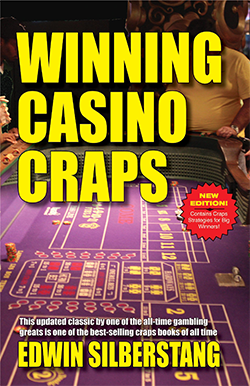
After Snake Eyes was published in 1977, Silberstang followed up with a nonfiction book on card games in 1978, titled Winning Poker Strategy. His next contribution to the field was Winning Casino Craps in 1979, which is just one craps book of more than 50 books that Silberstrang would write before his death in 2012 at the age of 82.
Throughout 145 pages, Silberstrang covers the basics in-depth, running through the rules of craps, table layout, basic and advanced bets, and the various systems commonly employed by experienced players. This information is helpful for novice players. However, anybody who has played the game before will likely gloss over these sections.
Regrettably, Silberstrang simply doesn’t include enough in Winning Casino Craps to fill out the rest of the book on craps. Often, it appears as if he is just writing in a stream of consciousness style to knock out pages, and his style resembles an infomercial pitchman more than a professional gambler. The following passage is representative of Silberstrang’s shortcomings in this regard:
“When you win at casino craps, it’s like coining your own money. The casino chips fill your rails, and as the winning streak goes on, these chips turn from $5 into $25 chips, then to $100 chips, and if the streak lasts long enough, into $500 chips. All it takes is one hot roll and you’re on your way to big money, and I mean really big money.”
One of the first books on craps plays ever written – Winning Casino Craps– holds a certain sense of value as a historical artifact. Judged strictly on content value, however, and the craps book doesn’t offer all that much.
By Edwin Silberstang (1979 & 2007)
Before the Korean War provided an inconvenient interruption, Edwin Silberstang attended the University of Michigan and Columbia Law School. After serving his country, Silberstang went on to earn his law degree from Brooklyn Law School before joining his father’s practice.
Unsatisfied with the law, Silberstang began writing works of fiction. One of his first novels was titled Snake Eyes, taking place in a Las Vegas casino and featuring the game of craps as a background scene setter. Silberstang spent 1972 in Las Vegas researching for the novel, where he developed a penchant for casino gambling.
The Dice Doctor
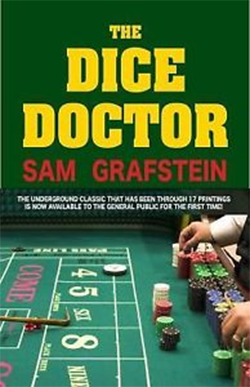
When poker legend Doyle “Texas Dolly” Brunson published his seminal poker strategy book Super / System in 1979, it took the country by storm. Written in a true Texas Road Gambler gruff style, Super / System gave casual players an authentic look into the secretive world of high-level, high-stakes poker.
Craps expert Sam Grafstein did the same with The Dice Doctor just two years later, condensing decades’ worth of personal experience into a veritable diary, one containing the insights and knowledge earned throughout countless hours at the table. This craps book is much shorter than Brunson’s poker bible, but in just 117 pages, Grafstein reveals what it takes to earn a living by rolling the dice.
Filled with improper grammar, brash language, and to-the-point advice, The Dice Doctor, distills Grafstein’s career into a series of anecdotes and stories. Those with an eye for craps history will love the conversational tone, and lack of professional editing as the book reads like a casual sit-down with the man himself.
Along with his own take on playing the game, Grafstein also includes a detailed rundown of popular betting plays, such as the 6 & 8, the Fireman, and the S-T-R-E-T-C-H. A total of 30 charts have also been compiled.
Beginners won’t find the basics, however, as Grafstein is writing solely for experienced craps players.
Whether or not the strategies contained within The Dice Doctor hold up today is still a matter of debate. But even as the mathematicians continue to provide evidence that progressive betting systems and creative covering bets don’t work, learning why they were devised in the first place is always interesting.
Brunson’s Super / System has been surpassed in terms of technical knowledge but still holds up surprisingly well today simply as a poker history book, and the same is true for Grafstein’s The Dice Doctor.
By Sam Grafstein (1981)
Sam Grafstein, perhaps the most respected craps player ever and a legend in the game, was a crapshooter and crap game operator for more than fifty years. During his life, he got to be a dealer, game operator, owner of a floating crap game, a dice doctor, and a renowned player for over six decades.
Beat the Craps Out of the Casinos: How to Play Craps and Win!

He contributed articles to WIN Magazine throughout the late 1980s, before establishing his own mail-order publishing house and releasing his first book, Beat the Craps Out of the Casinos: How to Play Craps and Win! in 1991.
Although the book has become one of the best-selling craps books ever written, Scoblete’s “classic” is rather bare at just 152 pages of condensed print. Even worse, much of the content covers strategies that are based more on wishful thinking than statistical probability.
Scoblete premises the book on craps through a conversation with a mysterious figure known as “The Captain,” who supposedly took Scoblete under his wing at some point in the distant past, teaching him the ropes of advantage play craps.
While many readers believe The Captain is simply Scoblete’s alter ego, this rhetorical device can be grating after reading several chapters, especially given the character’s arrogant tone and often fallacious reasoning.
For example, during a discussion of Scoblete’s “Five-Count” method, which involves waiting for a roller to hit five consecutive “successful” rolls before placing a bet, the author indulges in a convoluted view of the game’s basic mathematical structure.
According to Scoblete, the Five-Count works by giving players the chance to spot “hot rollers” and take advantage of their good luck. In the author’s own words: “Instead of looking at craps as individual rolls of the dice, I look at the game as a series of fluctuations in probability … if a fluctuation occurs in which the 7 is not thrown, but most of the other numbers repeat, again and again, we call that a ‘hot roll.’”
Unfortunately for readers, approaching craps in this manner is a surefire way to become a losing player over the long run, and no matter how strongly Scoblete and other gamblers of his era believe in the power of streaks, they simply don’t exist.
Informed readers will likely balk at Scoblete’s strategic approach to the game, but for those interested in looking back at how things once were, this book provides a glimpse into an outmoded concept of “optimal” play.
By Frank Scoblete (1991)
An entertainer and touring theater actor by trade, Frank Scoblete worked the stage until 1985. That year, a role in a new play titled “The Only Game in Town” prompted a research trip to nearby Atlantic City, New Jersey, where Scoblete became fascinated with casino games.
As his interest in cracking the proverbial code behind games of chance grew, Scoblete decided to sell off his shares in the theater company. Embarking on a new career as a professional gambler alongside his former co-star and future wife Alene Paone, Scoblete spent most of his time at the tables between 1986 and 1992.
John Patrick’s Craps: Walk Out a Winner
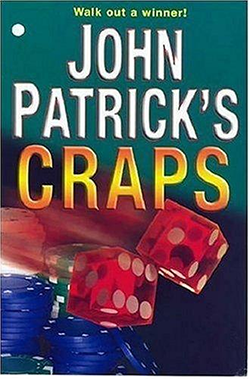
Patrick wrote several books on gambling and game theory, with most falling under his ‘So You Wanna Be a Gambler?’ series, including titles like Blackjack (1983), Slots-Roulette (1983), and Baccarat (1985). As the host of “So You Wanna Be a Gambler?” a weekly television show on Financial News Network (FNN), Patrick also dispensed gambling knowledge to viewers for 10 years.
With the release of John Patrick’s Craps: Walk Out a Winner in 1991, the prolific gambling author turned his attention to the popular dice game. At 329 pages, this craps book is on the larger side of the industry spectrum, and for the first 150 pages or so, Patrick sticks to the nuts and bolts of understanding craps at a higher level.
Beginners will love his uncomplicated approach to explaining the game’s basic rules, structure, available wagers, table layout, and etiquette. As a longtime professional gambler, Patrick has seen it all, so learning hard-earned lessons from somebody who has been there and done that is highly beneficial. As nothing more than an instruction manual on the game of craps, the first half of this craps book covers it all.
Patrick goes on to introduce his “Big Four” series of crucial skills every winning craps player must master: Bankroll, Knowledge, Money Management, and Discipline. These lessons are also quite useful. Even though the advice may be a bit conservative for some readers’ tastes, the patient approach to extracting small wins is efficient.
Unfortunately, Patrick devotes much of the book’s second half to explaining various progressive betting patterns and other systems that have been shown to be marginal at best. As an example, Patrick advocates using the “any craps” bet as a hedge throughout the craps book, but any craps expert with an interest in math can tell you that this bet offers an unbeatable house edge of 11.11 percent.
He also spends several sections on the subject of streaks, wrongfully advising readers to “chart a table” tracking previous results. Like most gamblers of his generation, for Patrick, Lady Luck is a legitimate force to be reckoned with, and he believes that observing patterns and trends can help him accurately predict the results of upcoming rolls. This is nonsense to be sure, so savvy readers would be wise to skip through these passages.
As an introduction to the game of craps, both from a technical and personal standpoint, “John Patrick’s Craps: Walking Out a Winner” is a quality read. Even some of the strategy advice is sound, so just take care to discard the chapters about betting systems and charting tables.
By John Patrick (1991)
Hailing from the bygone era of grizzled road gamblers, John Patrick has been involved in the gambling industry for more than 50 years.
Patrick cut his teeth haunting riverboat casinos in Mississippi, but like most hometown heroes who try leaping to the next level, he soon found himself broke and busted. To rebuild his bankroll, Patrick took jobs in local casinos and card rooms as a “prop” player, earning $10 per day for gambling and keeping the tables active.
Along with his earnings from a dishwashing position, Patrick slowly rebuilt his stake, saving money and establishing a renewed bankroll.
Determined never again to find himself failing financially, Patrick committed himself to master a new method of efficient money management. As he recounted later about his strategic shift, “I don’t win a lot, but more importantly, I don’t lose a lot. I know what it’s like to lose because I was so good at it. It ain’t a good feeling.”
Craps: Take the Money and Run
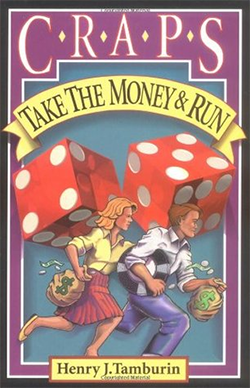
Tamburin’s contributions to the gambling strategy canon began in 1983, with the publication of Winning Baccarat Strategies. In 1994, he released Blackjack: Take the Money and Run, which went became a best-seller within the gambling book market. The following year Tamburin published Craps: Take the Money and Run, which was the last book he ever wrote.
Written with the novice player in mind, Craps: Take the Money and Run walks readers through the essential information they’ll need to know before ever placing their first bet. Experienced players may find this information to be superfluous. Still, for countless people who are unfamiliar with the game’s mechanics, Tamburin’s straightforward style and detailed explanations are the perfect way to learn.
At just 128 pages in length, this craps book offers a brisk brush up on the basics and should be considered only by new players who need to establish foundational knowledge. Tamburin’s actual strategy advice is par for the course, consisting of an Increased Odds system designed to take advantage of the up to 100x odds offered in the old days by casinos like Binion’s Horseshoe.
This advice hasn’t aged all that well, but when Craps: Take the Money and Run is considered strictly an instruction manual, the content is top-notch.
By Henry Tamburin (1995)
Primarily a blackjack specialist by trade, Henry Tamburin has been playing and writing about casino games for the last 50 years.
With more than 700 article credits appearing in publications like The Gambler Magazine, Gaming South Magazine, Strictly Slots, and Casino Player Magazine, Tamburin has applied his educational background in mathematics, including a Ph.D. in chemistry, to the study of game theory.
John Patrick’s Advanced Craps: The Advanced Player’s Guide to Winning
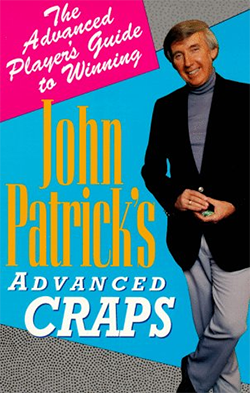
After publishing John Patrick’s Craps: Walk Out a Winner in 1991, Patrick updated his research on the game four years later with John Patrick’s Advanced Craps: The Advanced Player’s Guide to Winning. Clocking in at a whopping 399 pages, double the typical size of gambling strategy craps books, Patrick’s treatise on the classic dice game is a decidedly mixed bag in terms of content.
You’ll find a wealth of helpful information on employing a conservative money management strategy, walking away with small wins rather than risking the chase for more significant scores, and using offsetting bets to lower the house edge.
The centerpiece of the book’s strategy advice is the “Patrick System.” This involves betting an equal amount on both the pass line and the don’t pass line on the come-out roll. According to Patrick, this nullifies the influence of the 7, and while the house edge increases slightly on the come out, you’ll enjoy a mitigated risk on subsequent rolls.
Unfortunately, Patrick is a firm believer in outdated notions like “charting the table” or keeping track of the results from previous rolls while searching for patterns or trends. In Patrick’s estimation, streaks are a genuine part of any gambling game, and even though the math says otherwise, he advises readers to pay close attention to what the dice are saying. Of course, every roll of the dice represents an entirely independent occurrence, so much of Patrick’s reasoning here is faulty.
Nonetheless, serious craps players will appreciate Patrick’s breakdown of the complex array of available wagers, his creative way of covering various bets at the same time while reducing the house edge, and his effective techniques for properly preserving your bankroll.
By John Patrick (1995)
Forever Craps: The Five-Step Advantage Play Method
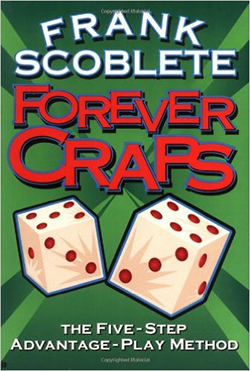
An update on Frank Scoblete’s original “Five Count” system, the 172-page Forever Craps: The Five-Step Advantage Play Method consists primarily of unreliable, unproven systems.
As the title implies, Scoblete devotes much of his energy to the Five-Count system, which he has now christened the “Five-Step Advantage Play.” The strategy involves nothing more than observing a roller and waiting for five consecutive “successful” rolls before placing a wager. According to this theory, waiting to identify “hot shooters” allows players to hitch their wagon to a lucky roller and reap profits with reduced risk.
Naturally, most reasonable readers will scoff at a system predicated on luck, especially one which uses a sample size of just five rolls to determine a hot shooter from a cold one. With fuzzy math, inexact figures, and other rough “analysis,” Scoblete’s reasoning is encapsulated by the following passage:
“On average, we can expect to have to spend about 34 hours at the table to find one really hot shooter. Of course, all these figures are approximate and subject to considerable variation, but suffice it to say that in a three-day weekend spending 10-12 hours per day at the tables, a player might expect to find only one really hot shooter.”
Words and phrases like “approximate,” “subject to considerable variation,” and “might expect” don’t exactly inspire confidence, and this craps book is based almost solely on the type of faulty logic found above.
Scoblete also spends several pages on the subject of “Rhythmic Rolling,” or his turn of phrase to describe dice control techniques. Again, while dice control may be a tactic employed by expert players with decades of experience, the majority of readers simply aren’t capable of benefiting from these lessons.
By Frank Scoblete (2000)
Get the Edge at Craps

Usually writing under his preferred pseudonym of “Sharpshooter,” Pawlicki has written dozens of articles on craps strategy, specifically dice control, for Frank Scoblete’s Casino City Times website.
After developing a five-part PARR course along with Patterson, Pawlicki compiled much of that information to form the foundation of Get the Edge at Craps. Throughout 321 pages, Sharpshooter himself dives deep into the study of “setting,” “gripping,” and “delivering” the dice in such a way as to better control the outcome of a roll.
Following an appearance by Pawlicki on the History Channel’s Breaking Vegas series in 2007, Sharpshooter is credited as the founder of the first serious dice control team, “Rosebud” – mainstream interest in dice control has been renewed in recent years.
Much of the book is devoted to explaining how dice control works and properly employing this tactic in the casino setting. If you have any interest in dice control, whether practical or theoretical, absorbing Pawlicki’s knowledge is the perfect way to spend your time between sessions at the tables.
And even if you don’t believe in dice control, or are too wary to attempt it at an actual casino, Part One of the craps book consists of over 60 pages that explain the game’s rules and mechanics in great detail.
Get the Edge at Craps is a niche product aimed at aspiring dice control specialists. Still, any serious craps player should consider the title an essential part of their casino game library.
By Sharpshooter (2002)
The man known by craps strategy aficionados as “Sharpshooter” is none other than Christopher Pawlicki, a longtime figure within the secretive world of dice control.
Pawlicki began his career in engineering before discovering the work of craps expert Jerry Patterson in the 1990s.
Patterson had invented his dice control technique, known as the Patterson Rhythm Roll or PARR, and by 1996, Pawlicki had been invited along with 79 other dice controllers to attend a PARR workshop in Las Vegas. After Patterson noticed Pawlicki’s proficiency in manipulating the dice to his will, the pair collaborated to form the PARR Dice Control Course and the “Perfect Pitch Delivery” system.
Golden Touch Dice Control Revolution!

Co-authored by Frank Scoblete and dice control master Dominic “Dominator” LoRiggio, Golden Touch Dice Control Revolution! offers another take on the technique of dice control.
As a supplement to Scoblete’s typically unreliable advice on the Five-Step system and progressive betting patterns, LoRiggio includes several straightforward lessons on the physical skills needed to manipulate a pair of dice effectively.
This book appears to be a comprehensive tutorial on the skill of dice control. It explains “the stance, the scan, the dice sets, the grab, the grip, the pickup, the throw, the backspin, and the bounce; where and how to land the dice; how to hit the back wall properly; (and) the proper arc for the dice on different types of tables.”
Unfortunately, while a few supremely gifted players may have perfected the craft throughout the years, the vast majority of players cannot achieve the same effect promised by Scoblete and LoRiggio.
Of course, it’s your prerogative to try your hand at rolling the dice as you please, but as several reviews of Golden Touch Dice Control Revolution! have noted, doing so can result in an immediate ban by an attentive stickman.
Indeed, Scoblete and LoRiggio may have once conquered the gaming pit by perfectly rolling the dice and landing them on command. After all, they’d have trouble filling the book’s 265 pages if they hadn’t.
But in today’s day and age, dice control is a technique akin to counting through a single deck in blackjack. Sure, it’s technically possible, but it’s highly unlikely given the modern casino security environment, including high-grade cameras and more informed staff.
By Frank Scoblete & Dominic LoRiggio (2005)
Wong on Dice

During his Ph.D. studies at Stanford University, Ferguson discovered Edward Thorp’s classic 1962 blackjack strategy book, Beat the Dealer. After using Thorp’s lessons to teach himself the art of counting cards, Ferguson set out to improve upon the former’s original research, supplementing it with information on the Nevada games in which dealers must hit on soft 17s rather than stand.
The research prompted Ferguson to explore casino gambling as a new profession. He famously convinced staff at Stanford to grant him a $1 salary for his work as a professor in exchange for permission to miss faculty meetings.
The free time allowed Ferguson to pursue professional blackjack in earnest. He eventually compiled his charts, tables, and other research on card counting and optimal play to write Professional Blackjack in 1975.
Thirty years and seven books on gambling strategy later, Ferguson (now known as “Stanford Wong” to the masses) turned his attention toward craps, publishing Wong on Dice in 2005.
Essentially a study of dice control techniques, Wong’s 192-page manual is straightforward and to the point, offering readers a concise overview of the theory. The first three chapters of the craps book cover nothing more than the basics, including what to expect to find at a craps table in the casino setting, and Ferguson readily advises readers who know the game to skip these sections.
Chapters 4, 5, and 6 are spent explaining the intricacies of dice control or dice setting in Ferguson’s parlance. A little light on actual instruction, Ferguson instead focuses on examining the concept of dice control from an objective, scientific standpoint. Combined with video tutorials or more thorough dice control lessons, Ferguson’s work should help beginners grasp the reasoning behind why some aspects of dice control are effective.
The final four chapters of the book cover the mathematics behind craps betting, running through various scenarios and providing concrete examples of his theories in action. While Ferguson doesn’t always “show his work,” lessons like placing a come bet while setting to avoid 7s are invariably correct from a mathematical standpoint.
No blackjack expert can call themselves such without a copy of Ferguson’s Professional Blackjack on their bookshelves. While “Stanford Wong” may not be such an authority on craps, his take on dice control is measured and well-spoken. If you’re looking to understand the theory of setting dice without the blatant system sales pitches and promotional language used by other casino gambling writers, Wong on Dice is a tremendous entry point.
By Stanford Wong (2005)
The name “Stanley Wong” is legendary within blackjack circles, but the moniker is a pen name employed by finance professor John Ferguson.
No Nonsense Craps: The Consummate Guide to Winning at the Crap Table

Written to debunk the magical claims of craps system specialists and other purveyors of snake oil No Nonsense Craps: The Consummate Guide to Winning at the Crap Table takes on the fallacious notion of hot rollers and dice control.
In just 100 pages, Orlyn critiques and deconstructs the popular craps theories put forth by many of the authors listed above, taking them to task for knowingly selling readers useless information. Equating ideas like table charting, dice setting, and point counting to “useless carnival barking schemes,” Orlyn is relentless in his attack on baseless craps systems.
By exposing the myths, superstitions, and mistaken beliefs written about by major craps authors, Orlyn does his readers a great service. He grounds their knowledge of the game in the “simple but profound lessons of two-dice probability theory presented for the novice and seasoned player alike.”
Of course, Orlyn does have his preferred method to play the game, but rather than the “can’t miss” way to win, he advocates a conservative approach designed to accumulate small wins while mitigating significant losses.
Leaving aside Orlyn’s “Table Time Plus” strategy, No Nonsense Craps is just that: a direct, straightforward book on the game of craps as it truly exists, and not as we all wish it could be.
By Richard Orlyn (2008)
As a professor and attorney holding both his JD and MBA degrees, author Richard Orlyn is well-qualified to provide a rigorous review of the more sensational craps strategies on the market.


